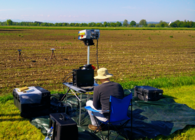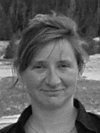Modular Observation Solutions for Earth Systems - MOSES

Funding by: HGF - Helmholtz Association of German Research Centres
Funding period: in 2022 MOSES started regular operation
Project partners: Alfred Wegener Institute, Helmholtz Centre for Polar and Marine Research (AWI) I Helmholtz Centre for Environmental Research (UFZ) I Karlsruhe Institute of Technology (KIT) I Jülich Research Centre (FZJ) I Helmholtz Centrum Munich I Zurich University of Applied Sciences/ZHAW I Eberhard Karls University of Tübingen I Free University of Berlin I Technical University of Berlin
MOSES (Modular Observation Solutions for Earth Systems) has been developed as a project and earth observation system within the “Earth and Environment” research field of the Helmholtz Association to decipher the interactions of short-term events and long-term trends in Earth and environmental systems.
It is well known that climate change affects the Earth and environment at many different time scales and compartments, but currently, only very limited knowledge is available on the importance of distinct stochastic events for long-term trends. MOSES primarily targets four events: heat waves, hydrologic extremes, ocean eddies and the thawing of permafrost. These events were chosen due to their relevance to climate and environmental change and their socio-economic impacts. The observation concept of MOSES follows an “event chain” approach, initiated by recording the extent and intensity of the investigated events and capturing the processes they trigger along and across the surrounding Earth compartments.
To detect dynamic events in large-scale Earth systems, a highly flexible and mobile observing system such as MOSES is required.
The GFZ section 1.4 is involved with the modules "Hyperspectral thermal remote sensing" and "Land-atmosphere fluxes" in the event chains "Heat waves", and "Permafrost" with new sensors and observation solutions:
The change in the environment under heat and drought stress and its influence on vegetation, soil and water balance is investigated ground based as well as airborne using a new TelOps Hyper-Cam LW FTIR imaging spectrometer operating in the thermal infrared spectral range.
The turbulent exchange of greenhouse gases between earth and atmosphere is measured at high spatial resolution using a newly developed and highly mobile airborne eddy covariance system deployed on innovative unmanned aerial vehicles (UAV).
More information: www.moses-helmholtz.de





